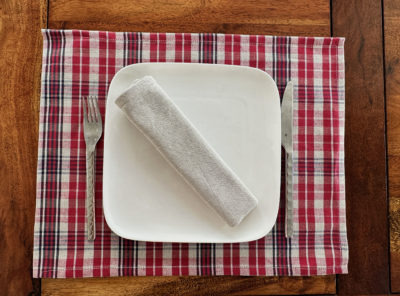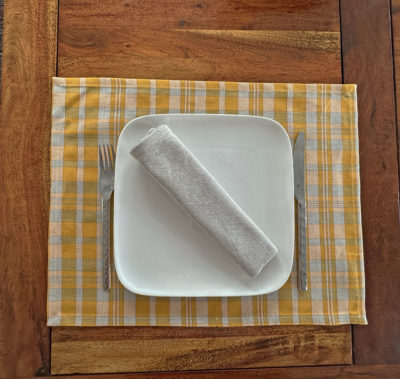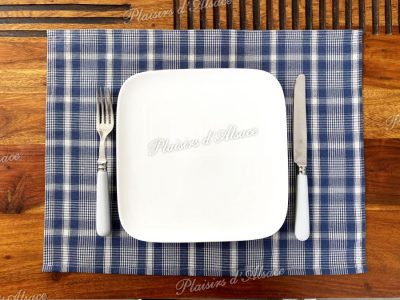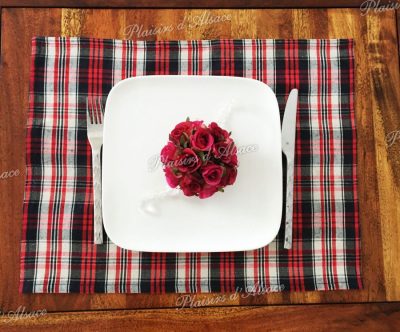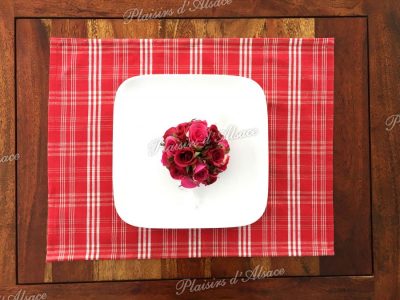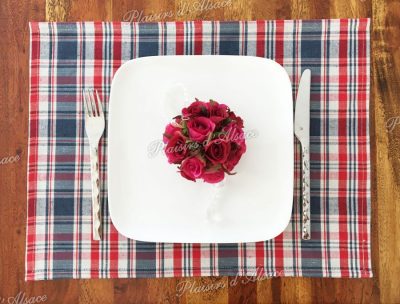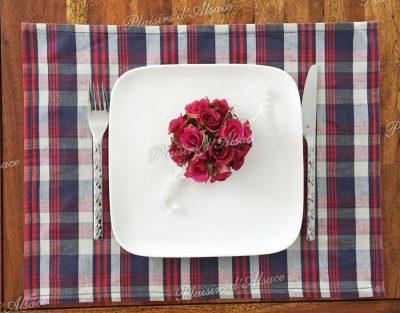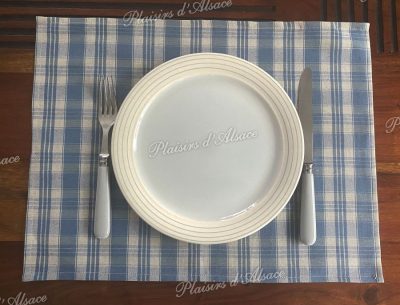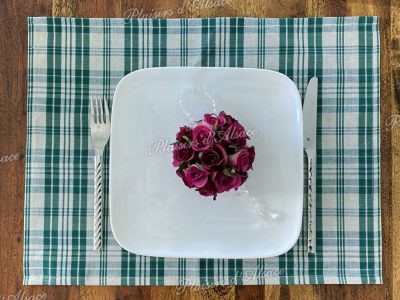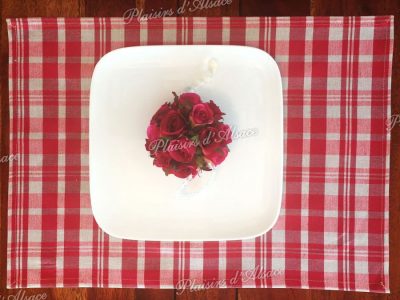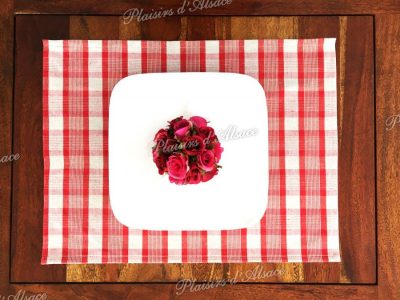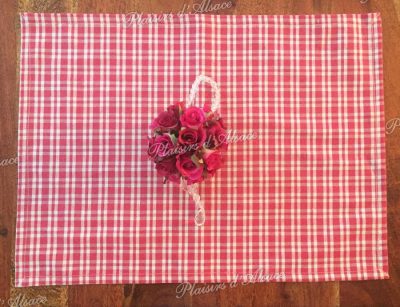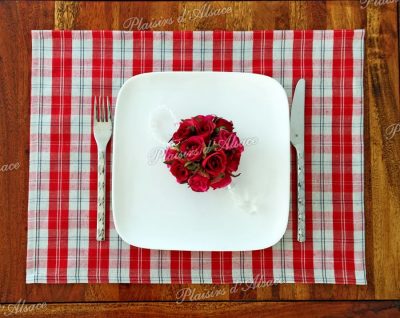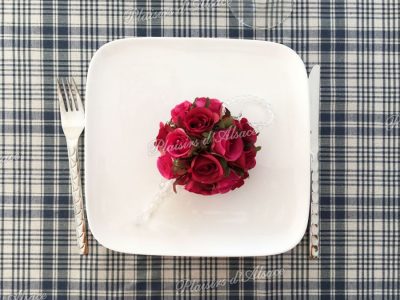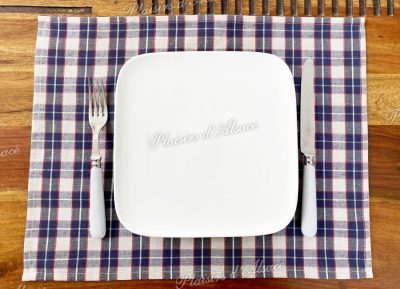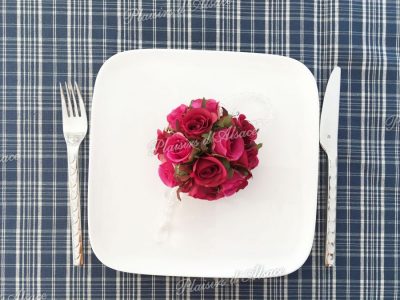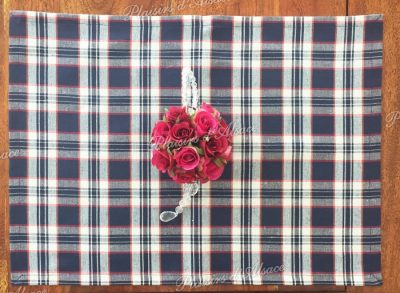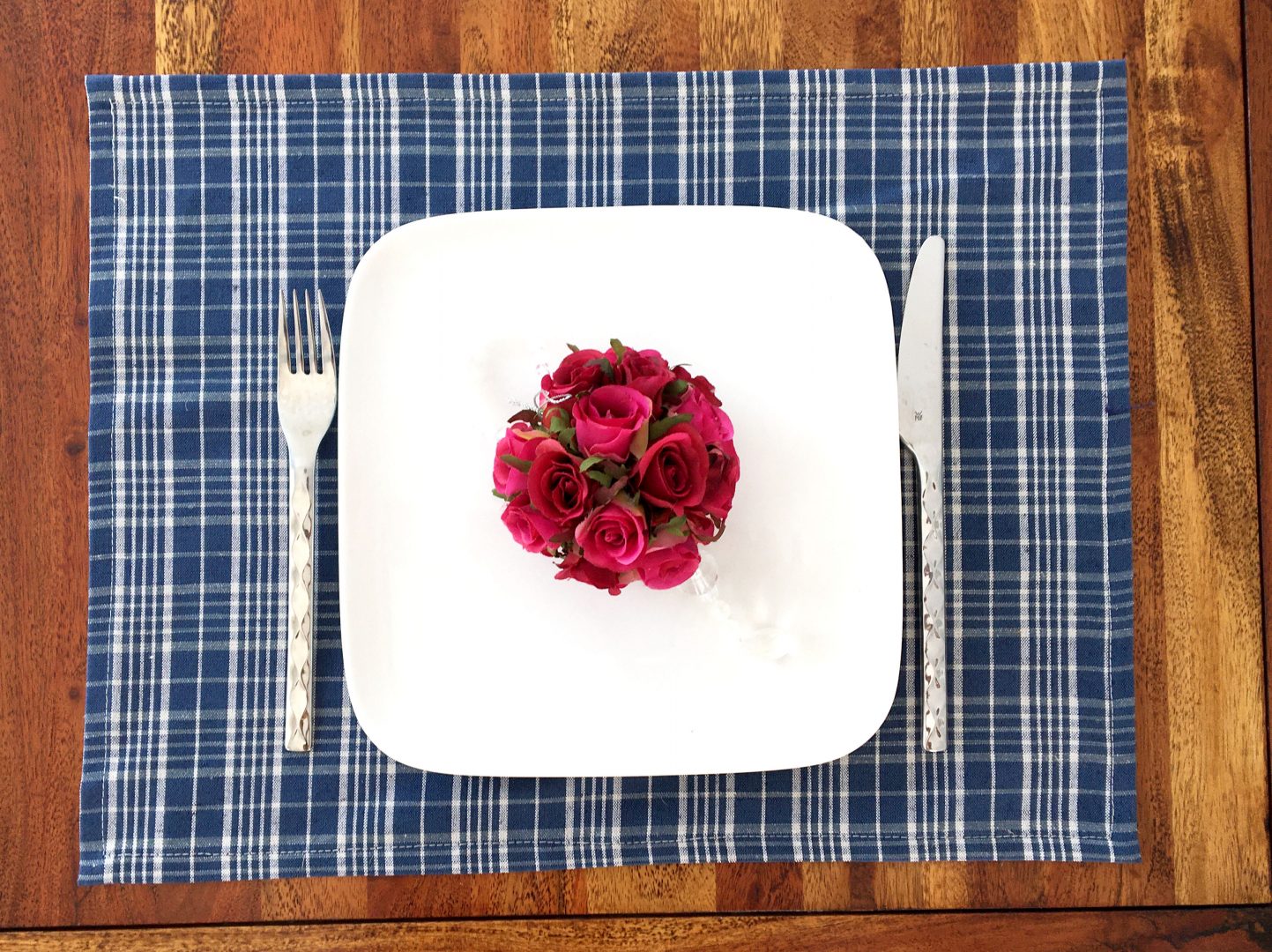
kelsch placemat
kelsch placemat
Kelsch is still a local fabric woven in the old way. The kelsch is made of linen. Its patterns, available endlessly, however vary preferably around stripes and checks. All colors are found there with a preference for blues and reds. Traditionally Kelsch fabric is available in ecru and blue, ecru and red checks or all three colors mixed.
A Brief History of Kelsch Fabric
Originally, this fabric was made of pure linen. Later, when cotton was imported and better known, from the 19th century, kelsch fabric began to be made in metis (i.e. with a cotton warp and a linen weft). flax has been cultivated in our regions since the 12th century, while cotton cultivation has never been possible there
Kelsch was made by farmers in winter, at their homes. On most farms, there was a loom, the threads were dyed with indigo for blue and madder for red. tile types varied by region, weavers and families.
This kelsch fabric was used to make duvet covers and pillowcases, most often the top of these covers was in kelsch, while the underside was in bleached linen. The curtains which closed the alcoves were also made of kelsch
Tradition has it that in the last century, Catholics had predominantly red fabrics while Protestants very often had blue checks.
Regarding the origin of the word “Kelsch”, it seems that it comes from the adjective “kölnisch” (from cologne) recalling the use of “Cologne blue” cultivated on this side of the Rhine since the 8th century . Indeed, Charlemagne had ordered and governed by very strict edicts the planting of pastel (giving the blue color) of the dyers.
Others put forward the idea that the word “kelsch” could be of Celtic origin. Indeed, the Celts planted flax and knew how to weave checkered fabrics, as the fabrics of the Scottish clans still bear witness to today...l
